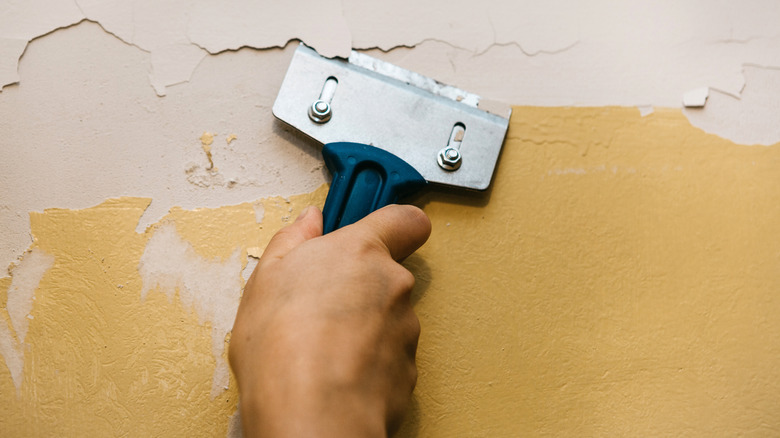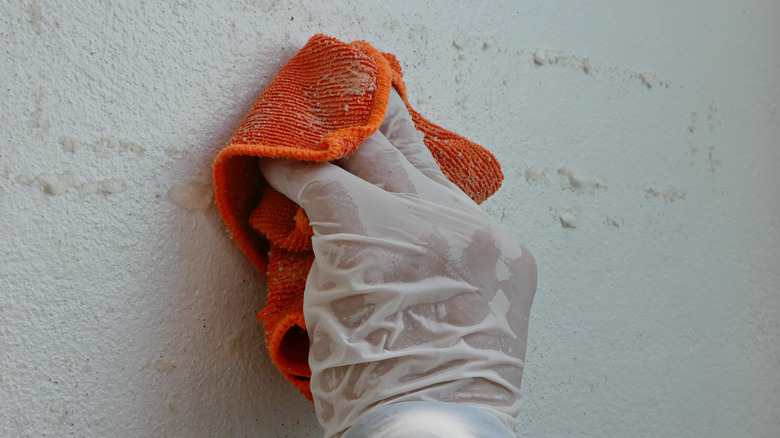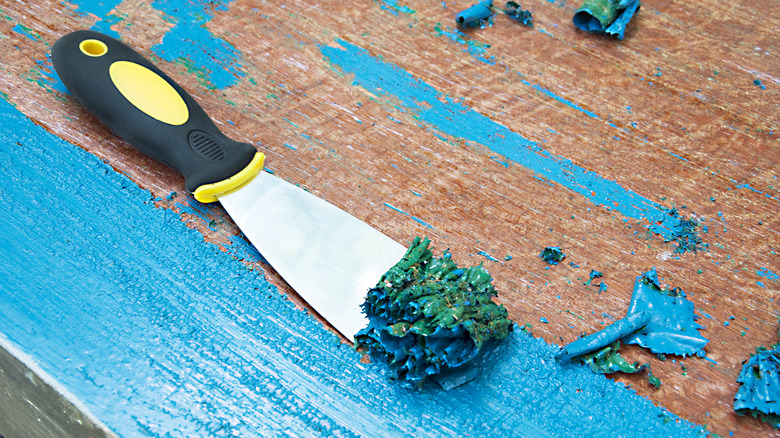Types Of Paint Remover (And How To Choose Which Is Right For Your Project)
If you're fixing up an old house or doing some upkeep, chances are you'll need to strip some paint. There are three basic types of paint removal; solvent-based and caustic-based paint removers or doing so manually, either by hand or with power tools. Choosing which way to go for your project depends on a number of factors, including the surface you're working on, your time frame, your budget, and your comfort level with various tools or substances. If you're uncomfortable using power or hand tools, a liquid paint remover is probably a better fit for you.
Although flammable paint removers containing harmful chemicals still exist today, there are many different options available for different situations, including products with much lower toxicity levels. We'll mention some natural alternatives later.
Basic safety precautions apply when clearing paint from any surface. If you're removing paint from a piece of wood furniture, for example, do it outdoors, if possible, or in a well-ventilated space. Be sure to read the labels on any products you buy. If removing paint from interior walls, ventilation is essential (open windows and fans at the minimum); get some protective gear, such as gloves and masks, to protect yourself from potential exposure to toxic chemicals.
Solvent and caustic-based paint removers
Solvent-based paint removers work by separating paint ingredients and breaking down their chemical bonds. Methylene chloride is a highly toxic ingredient once used in these products that was banned in 2010 by the European Union, according to Rawlins Paints and Coatings, and in 2019 by the U.S. Check labels and avoid using anything containing this ingredient. A solvent-based paint remover works well to remove thin layers of paint and leave a fairly clean finish, but the product is messy to use. Other supplies to have on hand: disposable paintbrushes, a putty knife, fine steel wool, mineral spirits, and clean cotton rags for spills — old T-shirts work fine. Apply the solvent with a brush, scrape with the putty knife, then use steel wool if needed. Finish by cleaning the residue with mineral spirits, then wipe clean.
Caustic-based paint thinners break down the compounds in oil-based paints. These are water-based solutions with a highly alkaline pH. The active ingredient is lye, made with either potassium hydroxide or sodium hydroxide. Lye can cause skin irritation and chemical burns, according to Paint Pro. It should not be used on hardwoods due to the risk of staining. If you're removing thick layers of paint or stripping paint from molding, caustic-based strippers are your best bet. Apply caustic strippers with a brush in one direction only, and remove after the suggested time elapses according to package directions. You need to apply a neutralizer afterward: vinegar and water work fine.
Manual paint removal and non-toxic options
Manual paint removal can be a good option depending on the scope of your project and your skill level with tools. This method uses tools such as scrapers, chisels, putty knives, razor blades, or power tools such as heat guns or orbital sanders. Tools with razor blades are effective for paint removal but can damage softer wood. As with chemical products, a mask should be worn to avoid inhalation of paint fragments and dust.
If you're concerned about chemical toxicity, try a natural product with smaller amounts of chemicals, such as soy or citrus-based paint removers. For a furniture project, apply these gel-based paint removers with brushes and cotton rags, and remove them with a scraping tool. This can also be a relatively inexpensive choice, but because these products work a bit more slowly, you may have to use a larger amount. These natural formulas will work on water-based, latex, acrylic, or oil-based paints, and varnished or shellacked surfaces. Also, keep in mind that while these products are often biodegradable, the paint you're removing may not be. Enamel paints can be tricky to remove and are highly flammable. Be sure to dispose of the waste from these projects properly, treating them as hazardous household waste.


